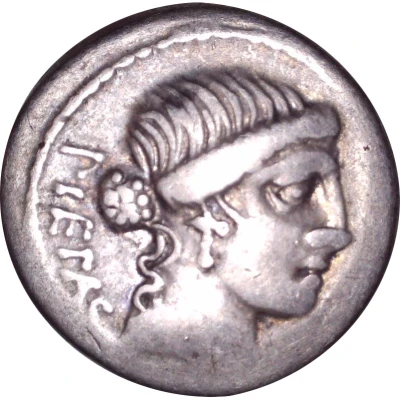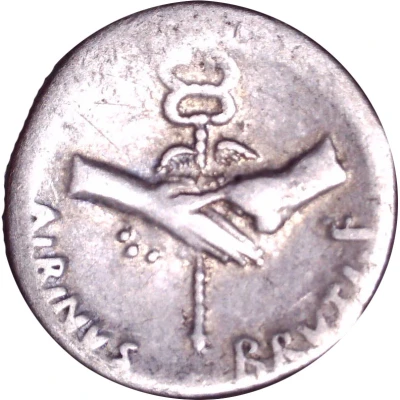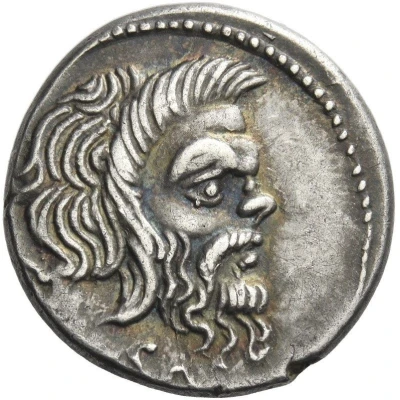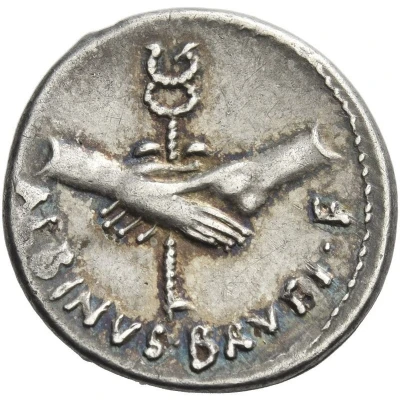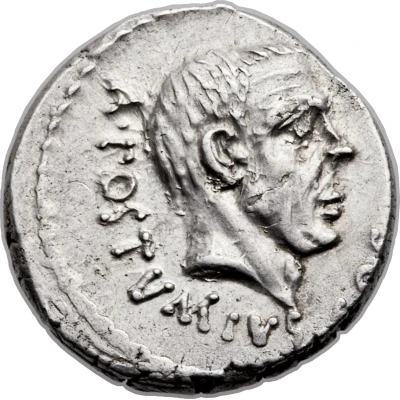
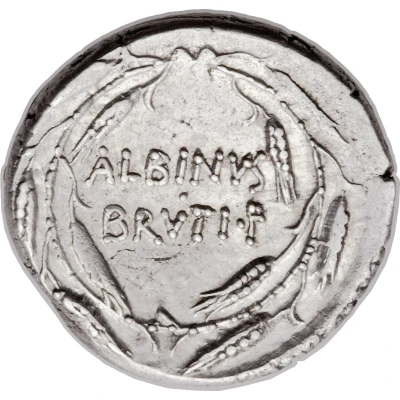

© Heritage Auctions
Denarius Junia: Decimus Junius Brutus Albinus; A•POSTVMIVS•COS / ALBINVS•BRVTI•F 48 BC
48 BC year| Silver | 3.91 g | 17 mm |
| Issuer | Rome › Roman Republic (509 BC - 27 BC) |
|---|---|
| Period | Republic (509 BC - 27 BC) |
| Type | Standard circulation coin |
| Year | 48 BC |
| Value | Denarius (1) |
| Currency | Denarius of 16 Asses (141 – 27 BC) |
| Composition | Silver |
| Weight | 3.91 g |
| Diameter | 17 mm |
| Shape | Round (irregular) |
| Technique | Hammered |
| Orientation | Variable alignment ↺ |
| Demonetized | Yes |
| Updated | 2024-10-06 |
| Numista | N#66683 |
|---|---|
| Rarity index | 100% |
Reverse
Moneyer mark in two lines within wreath of corn-ears.
Border of dots.
Script: Latin
Lettering: ALBINVS•BRVTI•F
Unabridged legend: Albinus Brutus Filius
Translation: [Decimus Junius Brutus] Albinus, son of Brutus
Edge
Plain
Comment
The gens Junia was one of the most celebrated families at Rome. The gens may originally have been patrician. The family was already prominent in the last days of the Roman monarchy. Lucius Junius Brutus was the nephew of Lucius Tarquinius Superbus, the seventh and last King of Rome, and on the expulsion of Tarquin in 509 BC, he became one of the first consuls of the Roman Republic.The gens Postumia was a patrician family, and as such always remained unadopted by any plebeian family. It was divided into several branches, the noblest of which, as recorded by name on Roman denarii, was the Albini.
Obverse portrait could be either of the two Aulus Postumius consuls of 151 BC or 99 BC.
Reverse lettering variants are known with either ALBIN or ALBINV or ALBINVS.
Interesting fact
One interesting fact about this coin is that it features the image of Decimus Junius Brutus Albinus, who was a prominent Roman politician and military leader, and one of the assassins of Julius Caesar. The coin was minted in 48 BC, just a year before Caesar's assassination, and it is believed that Brutus' image on the coin was a symbol of his opposition to Caesar's growing power and ambition.
